Artist and photographer Coco Capitán handpicked a series of "cat photographs"—but these aren’t just any cat photos. They were taken by members of Magnum Photos, a collective of some of the world’s most celebrated photographers. What kind of moments do these artists, known for capturing striking scenes across the globe, choose to turn their cameras toward cats? And how does the addition of Capitán’s handwritten words create new stories on the canvas of a t-shirt? In this interview, we asked each photographer about the stories behind their selected images, as well as their perspectives on photography and their relationship with the world around them.
Cristina de Middel
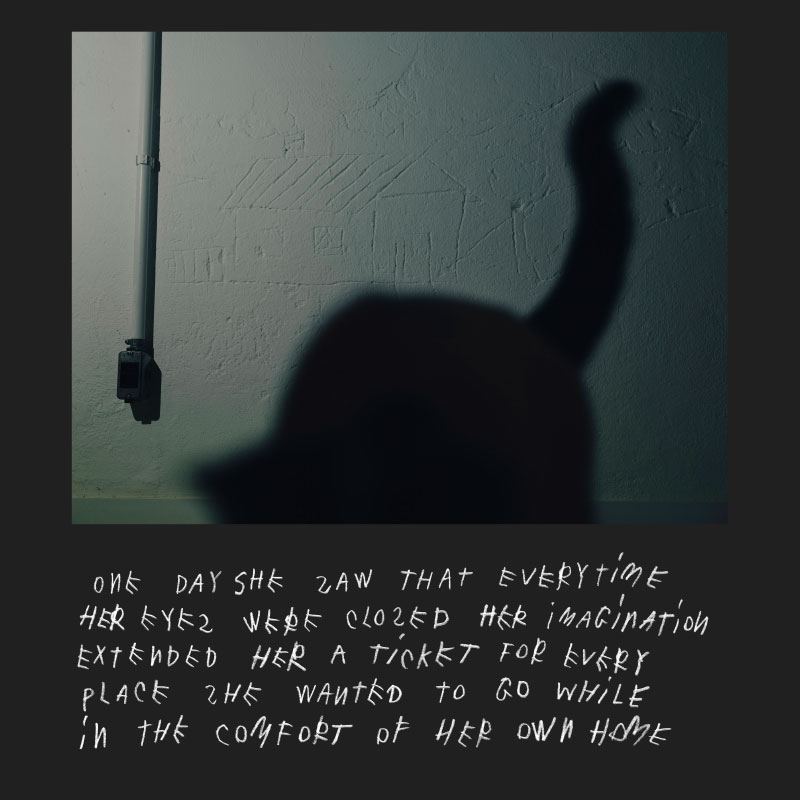
What is your relationship with the cat in your photograph? How did you encounter the cat, and what inspired you to take this particular image?
The cat in the picture is one of my three cats. Her name is Sopa, which means ‘soup’ and she is super sweet and curious. I live in an old building in Salvador and many times I turn into a studio in the many corners of the house by placing objects that shouldn’t be there and see how the cats interact with it. This was a small series I did with a big helium balloon that I placed on the terrace. It was there for a couple of days and this image is one of the many that I took with the cats who were of course very curious about this huge floating red shape.
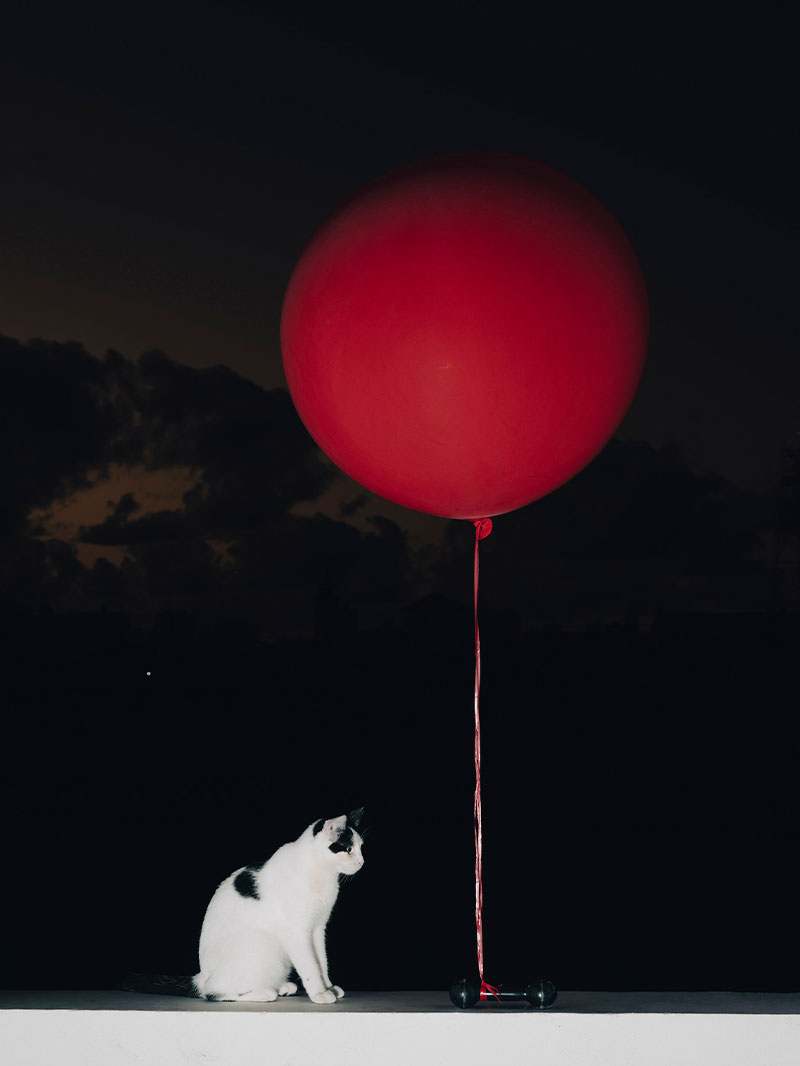
The red balloon frequently appears in your photography. What does it symbolize for you, and how does it tie into your broader body of work?
For me the red balloon is a way to draw visual attention to an image. It is an abstract shape that defies the three-dimensional perception we have of photography as a record of reality. It makes people spend more time looking at the image, figuring out what this uncommon and solid shape is doing in a literal depiction of the world that normally never has such pure shapes.
How do you feel about your photograph being paired with Coco Capitán’s handwritten words for this collaboration? Has this pairing changed the way you see your own image?
I always loved the work of Coco Capitan and how her words are always naive but also very wise, which are two talents that I also recognize in my cats :).I think the dynamic between text and image is always very interesting and of course it changes the reading of the image. In this case it opens it and makes it even more poetic. I love it.
Do you see photography primarily as a tool for documentation or a medium for imagination?
In my case it is both because my work is based on this hybrid approach to documenting the world that includes your own projections and dreams. I also document things that go beyond reality with the help of objects that are symbolic and that can connect us with a more expanded view of reality and ourselves. For me, the relation between reality and imagination is not one that opposes them, but one that makes them collaborate and play together.
In an era saturated with images, what do you see as the enduring power of photography?
I think photography is consolidating as the language of the future and that is why we feel the world is saturated with images, but it is also saturated with words and that was never a problem. I think we just need, as a society, to start learning this new language in the same way we did with reading and writing a couple of centuries ago. I do not see it as a threat, but as an opportunity.
Your work often moves between the realms of photojournalism and storytelling through fiction. How do you navigate and balance these two approaches?
For me it is quite natural to mix reality and fiction (or imagination) because when you use photography to describe the world, being limited to what already exists actually removes the possibility of including a solution or a deeper reflection about what you are describing. The topics I am interested in belong to journalism, but the way I approach them visually is more analytic than descriptive and in order to analyze a situation you need to be more abstract and conceptual. The way I see it is that in a newspaper you have the articles, but you also have opinion pieces. My work belongs to the realm of opinion, but a visual one.
PROFILE
Born in Spain and based between Mexico and Brazil, Cristina de Middel investigates photography’s ambiguous relationship to truth. Blending documentary and conceptual photographic practices, she plays with reconstructions and archetypes in order to build a more layered understanding of the subjects she approaches. She joined Magnum in 2017 and became Magnum President in 2022.
Alec Soth
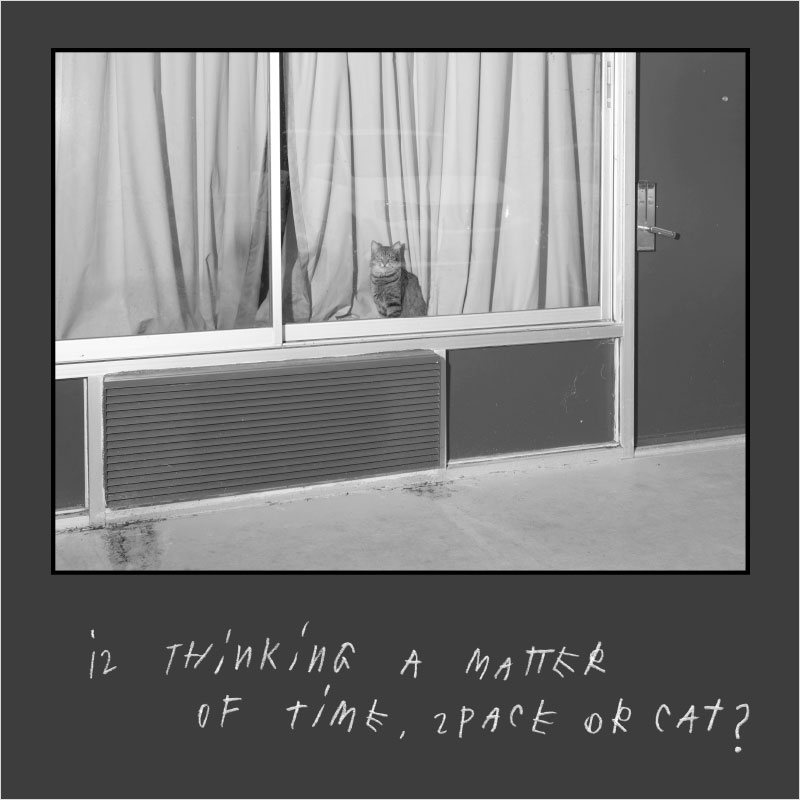
What is your relationship with the cat in your photograph? How did you encounter the cat, and what inspired you to take this particular image?
Near Disney World in Florida there are a strip of hotels which have now become temporary apartments. I found something bittersweet about these humble rooms being in proximity of a place built on a fantasy. This cat in the window seemed to also have dreams about the world outside.
How do you feel about your photograph being paired with Coco Capitán’s handwritten words for this collaboration? Has this pairing changed the way you see your own image?
I love it. As the owner of three cats and two dogs, I often consider the nature of animal consciousness. Do cats think about time and space? Do cats dream?
Do you see photography primarily as a tool for documentation or a medium for imagination?
Photography can be used in many different ways. But for me, I usually like to use photography as a diving board for the imagination.
In an era saturated with images, what do you see as the enduring power of photography?
Photography is a language. Like words, it can be used for everything from informal conversation or serious literature. I like that photography can be flexible, but what I care most about is authorship.
Your work often conveys a sense of connection and intimacy with the subjects you photograph. How do you approach building that connection, and how does it shape the final image?
I try not to force intimacy. If I’m honest about myself and my motivations, I sometimes make authentic connections. The feeling of this connection in photography isn’t quantifiable, but it’s what I’m looking for.
When your photographs are displayed on a wall, viewers experience them from a certain distance, but when they’re worn on a t-shirt, they become part of someone’s personal expression. How do you feel about this shift in how your work is experienced and the intimacy it creates with the wearer?
Like music, photography can live in the world in many different ways. It can live on a computer, on a book or on a wall. I’ve always embraced this. It makes men happy that it can also live on someone’s body and be an expression of their personality.
PROFILE
Born in Minneapolis, Minnesota, Alec Soth has been an exponent of the American tradition of “on-the-road photography,” critically acclaimed since he began his career. His works are held in the collections of major museums such as The San Francisco Museum of Modern Art and The Museum of Fine Arts, Houston. He established “Little Brown Mushroom” publishing company in 2008, known for its superb photobooks. He joined Magnum in 2004.
Sabiha Çimen
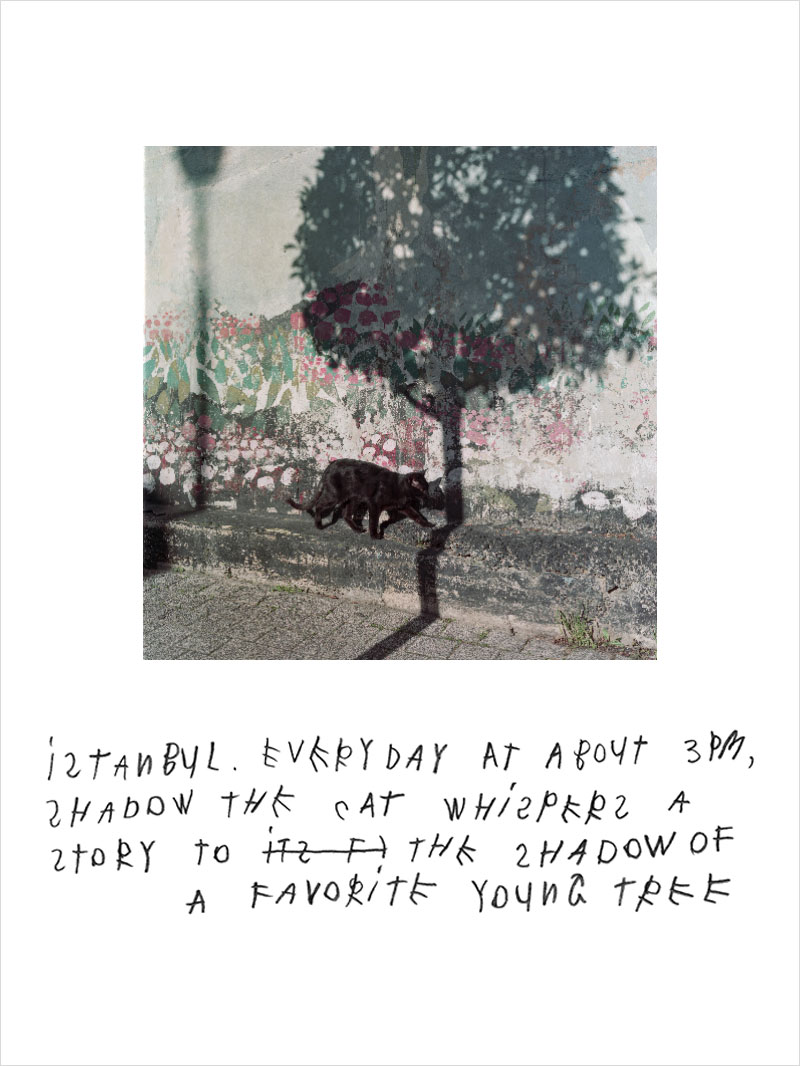
What is your relationship with the cat in your photograph? How did you encounter the cat, and what inspired you to take this particular image?
I was born and live in Istanbul. It's a city known for its street cats. There are maybe 30 cats that live only in my street. I encounter stray cats and dogs everyday. I love how the black cat in the image was sitting in front of that sunny painted school wall; heating himself on a winter day. l waited for the cat to step through the tinny shadow.
How do you feel about your photograph being paired with Coco Capitán’s handwritten words for this collaboration? Has this pairing changed the way you see your own image?
I feel that Coco’s handwriting made it more humorous and poetic at the same time. Like the cats themselves, funny and melancholic. And the t-shirt form made it more reachable for people in a creative way. Coco’s characteristic handwriting makes me feel like a fun game with cats, like somehow I envision them hanging in the air so tempting and waiting for me to catch them.
Do you see photography primarily as a tool for documentation or a medium for imagination?
Photography is my primary way to transform the emotions but there are lots of creative ways for imagination. But there are other amazing mediums for imagination that l am interested in like writing, sculpturing.
Your photos, particularly those in the series Hafiz: The Guardians of the Quran, have a stunning, dreamlike quality that feels almost cinematic. How much do you direct or set up a scene before taking a photograph?
I studied in that Quran school 27 years ago with my twin sister. My being one of them makes them trust me explicitly, we become real close friends first of all. They either understand and get used to what l like to shoot by time (because at first they were thinking l am a mad crazy girl). l stopped the moments when l liked the way that they held each other, they broke a watermelon by mistake while they were taking selfies with it. By time we established an unspoken collaboration. All based on their real daily life in Quran School and while having their free weekends in fun fairs etc.
Would you describe yourself as an observer or an insider in the scenes you photograph?
I am both an insider and an observer for this project, its super autobiographical project. They allow me to see myself back to them - my childhood -at the end all my subjects become my hundreds of twins.
PROFILE
Sabiha Çimen|Born in Istanbul, Turkey, Sabiha Çimen is a self-taught photographer. Her work focuses on long-term projects on portraiture and still life rooted in Islamic culture. She joined Magnum in 2020 and lives between Istanbul and New York.
Jean Gaumy
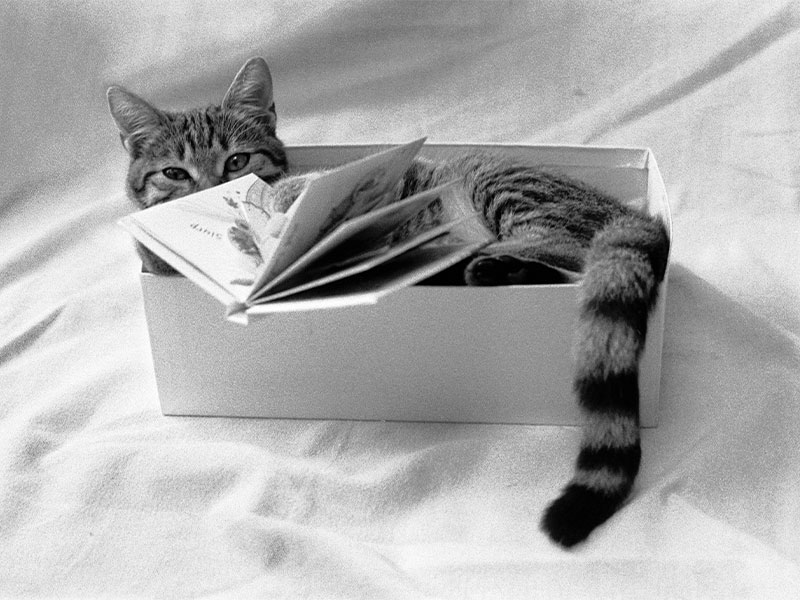
What is your relationship with the cat in your photograph? How did you encounter the cat, and what inspired you to take this particular image?
Pataud has been part of our family for many years. He’s the perfect example of a confident cat. His mother accustomed him from a young age to live harmoniously with humans. She raised him and his siblings right in the middle of a lively room, and he always took a joyful interest in everything happening around him. From the very beginning, there has been a strong relationship of mutual respect between him, my grandchildren, and the whole family. Considering one another. It has been an important reciprocal education. When I photograph him, we’re on the same page: no need to sign any kind of authorization. In fact, I’m convinced he enjoys being a bit in the spotlight. Improvisation or relaxation? No problem at all—he has always been extremely talented in those areas. When I’m getting ready to head out on assignment, Pataud, being a good companion, always comes by my side to carefully inspect my equipment and offer his advice. You never know. He could actually make an excellent photographer. Pataud is patient, very contemplative, and a virtuoso in reacting instantly when an opportunity arises. I won’t say what kind of opportunity—it’s between friends. A real good friend…
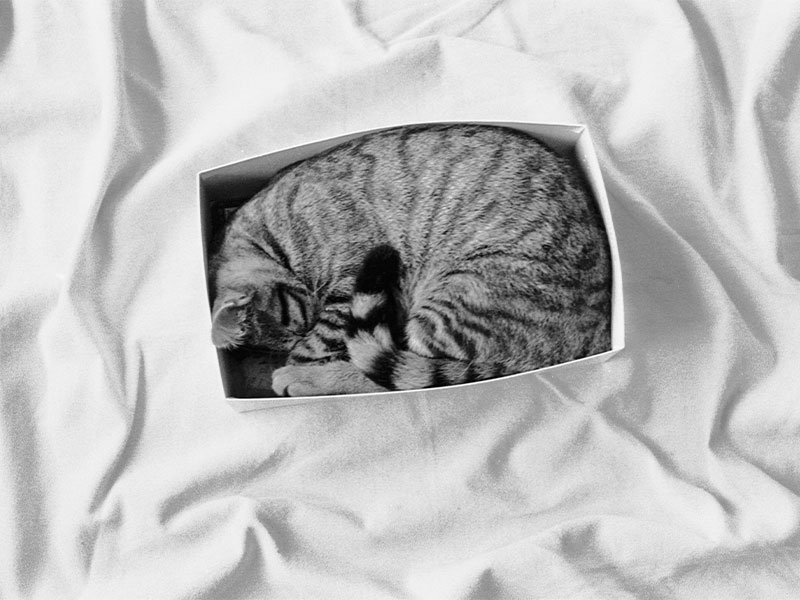
PROFILE
Jean Gaumy|Jean Gaumy is known for his eloquently evocative photography and cinematography, achieved through a deep engagement with his subjects through vivid and impactful long-term projects. His work has been exhibited worldwide and he has received many accolades for both his film and photography. He joined Magnum in 1977 and lives in Fécamp in Normandy, France. Pataud, featured here, is his family cat.
© Coco Capitán 2025
© Magnum Photos
Release dates and prices may vary. Some items might be limited to certain stores or countries of sale or may be sold out.













